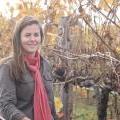| 2018 ASVO Seminar; Frontline pest and disease management for healthy vineyards | |
| Clonal selection for healthy vines Dr Cath Kidman, Wynns Coonawarra Estate |
| Cabernet Sauvignon is a variety of importance, producing high quality red wine in Australia. Growing world class Cabernet Sauvignon that reflects the complex expression of this variety in Coonawarra, continues to be an ongoing focus at Wynns. Formal heritage assessments to find superior selections of Cabernet Sauvignon for future propagation began at Wynns in 1998, and was significantly expanded in 2005 to include 8 Cabernet vineyards with a range in planting age from 47– 63 years. The project objective was to evaluate vine, fruit, and wine quality to develop a disease-free resource of optimal propagation material, sourced from the oldest vineyards. Each year, as part of the “mass selection propagation program” the heritage vineyards are subject to specific selection processes involving both negative and positive attributes. This work is important to Wynns as current vineyards of inferior heritage or health, or vineyards that deliver quality below the potential of the site, are replanted to this heritage material, in addition to other proven commercial clones. This diversity (commercial and heritage), is considered paramount for Wynns to manage risks associated with climate change and seasonal variability. The Johnson block is the oldest block of Cabernet Sauvignon in Coonawarra, it is pre-clonal, on own roots and predominantly dry grown. The vineyard has weathered 64 seasons, and therefore provides a unique opportunity to evaluate and select dry grown old vines with potential adaptation and tolerance to drought. The ultimate objective is to identify and establish a drought-adapted ecotype for future propagation purposes | |
Video-Clonal selection program
Our Partners and Sponsors










prev
next
